Feature
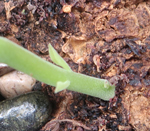
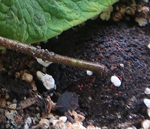
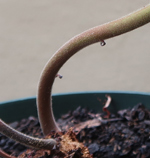
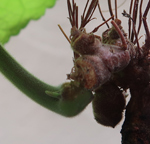
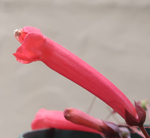
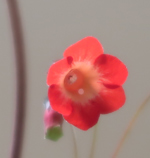
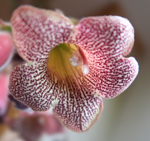
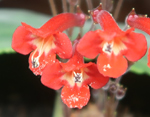
| Species list |
Hybrids list |
Tubers list |
Topics list |
Site index |
What's new |
Home page |
Comparison Of "Unifoliate" SpeciesThere are four sinningia species with what might be called a unifoliate habit. With all four of these species, the plant may have just a single leaf, seemingly growing directly from the tuber. Two of these species, Sinningia helioana and Sinningia stapelioides, are closely related, and the plants in their leafy phase (but not in flowering) look quite similar. Another species, Sinningia defoliata, is in the same "clade" (group of related species) as the previous two, but is not especially close within that clade. Finally, the fourth species, Sinningia tuberosa, not only belongs to a different clade (see table below), but has a different sort of tuber and growth pattern. All of these species are intriguing and highly recommended to the grower who has patience and space for them. |
Feature |
S. defoliata | S. helioana | S. stapelioides | S. tuberosa |
|---|---|---|---|---|
| Leaf count | One per stem | One or two per stem | One or two per stem | One per stem |
| Leafback | Green | Veins are green, but large areas between veins can be tinged with red | Green, but see below | Green |
| Leaf veining on back | Green | Green, even when leafback is reddened. | Miidvein, primary side veins are green. Secondary network veins can be red. | Green |
| Stem | Herbacious, green.
Old stems sometimes remain as dried stubs.
|
Stiff, red at base
|
Stiff, red at base
|
Herbacious, green or reddish
|
| Stem count | One (usually) ro a few | Usually one | Usually one | One to many |
| Flower | Red, tubular.
|
Red, tubular
|
Large, bell-shaped, white with purple veins
|
Red, tubular
|
| Tuber | Normal flattened sphere, but with stubs from previous years' growth. | Normal flattened sphere. New shoots start as red buds. | Normal flattened sphere. New shoots start as red buds. | Chaotic mess. Arms, legs, and tentacles in profusion. |
| Inflorescence | Raceme from tuber | Cyme from tuber | Cyme from tuber | Raceme from tuber |
| Clade | Corytholoma | Corytholoma | Corytholoma | Sinningia |